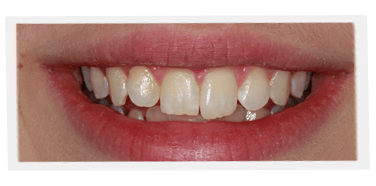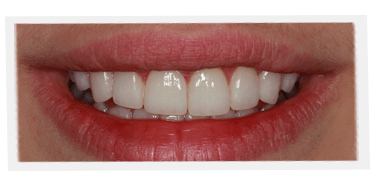
Many moons ago, I was a student of dentistry, being challenged by a rigorous program and battling my own demons (as we all are!). Luckily, I met some incredible mentors along the way who taught me the value of hard work and setting high expectations. Here’s an excerpt from my book, A Guide to the Perfect Smile, aptly titled, “My own voyage into the world of smiles.” Enjoy!
“My main inspiration as a dentist and communicator has been Dr. Wesley J. Dunn, the dean of dentistry at the University of Western Ontario. His command of the language was awe-inspiring to me and other students. He was a man of tremendous presence. I was always nervous around him, prefacing every sentence with the words, “You know…”This infuriated him. I’ll never forget how he once slammed his fist down on his desk and said, “If you say ‘you know’ one more time in my presence, I will throw you out of this office.” I couldn’t say a thing for the next forty minutes because, naturally, the loathsome words were now even more on the tip of my tongue.
Dr. Dunn had called me onto the carpet for being a little spotty, shall we say, in my studies.
“I don’t understand you,” he said. “This is the time when you should be showing brilliance, when you should be working really hard, and you’re just sitting in you classes and acting as if it’s not important.” His assessment of me – and it was accurate – was that I worked hard and did well when a course interested me, but was content to scrape by when it didn’t.
Given my less than stellar performance, I was shocked when Dr. Dunn asked me – ordered me, really – to give a speech to dentists and professors of dentistry at the London District Dental Society meeting held during homecoming. Every year the school asked its leading students to put on such a presentation.
I had never made a speech in my life. Faced with this prospect, I did not want to be a leading student. I wanted to be a running student. “Pick a topic like hypertension and dentistry,” he said. “Don’t worry. Giving a presentation is not hard.”
It was hard. Really hard. But I did what he asked, to an audience of about 150 people, and it went over well. Dr. Dunn sent me a beautiful letter, saying something like, “Your knowledge belies your tender years.”
I had never heard the word “belies” before and though he was quoting an English poet.
The presentation helped me catch the eye of Dr. Gerald Z. Wright, head of the pediatric dentistry department. He enlisted me in breaking a barrier for UWO’s dental faculty. No one from the program had ever landed an internship in a Toronto hospital. Though the dental school was coming on strong, and is now one of the best in Canada, at the time it was second tier.
Dr. Wright planned a pre-emptive assault on this barrier, and I was his cannon fodder. “Come with me. We’re going to Toronto,” he said, hauling me off to the Hospital for Sick Children. We stormed – well, he stormed, anyway – into the office of Dr. Arlington Dungy, head of the dentistry department at the hospital.
“Dr. Dungy,” he said, “this kid is good, good enough for an internship in your hospital. I’ve taken the time out to come down here with him to ask you to cut through all the bureaucracy and let him in. Dr. Dunn and I want this kid to work at Sick Kids to show you what we’re teaching our students.” I was hired, and my internship in the dentistry department at Sick Kids, in 1978 and 1979, would prove foundational to my later work in cosmetic dentistry and my understanding of the smile. I was assigned to work with the cranio – facial department on controversial, advanced work, along with plastic surgeons; speech pathologists; oral surgeons; ear, nose, and throat doctors; neurosurgeons; and social workers. The leading surgeon was Dr. Ian Munroe, a world-renowned cranio –facial surgeon now practicing in Texas.
Surgery in this department involved taking apart and putting back together again the faces of kids with major congenital abnormalities. As part of this process, the surgeons would move the jaws forward or back and needed a dentist to wire the jaws into their new position. Once the jaws were fixed, they could start to put the facial bones back where they wanted them. I went from learning the simple process of filling a cavity in a tooth to helping with total face reconstructions alongside experienced professionals from various medical specialties.
The experience was an object lesson for me in the fact that dentistry involves far more than teeth. The surgeons asked me questions that went way beyond what was being taught in dentistry and way beyond anything I could find in dentistry books and journals. I often had to admit I didn’t know what to do and then figure things out the best I could.
After that year, I went to work in general dentistry. After five or six years, however, I became restless. The work I was most interested in did not fit general practice. I attended lectures and conducted research that went beyond regular dentistry and into surgical and cosmetic issues. I was lucky to have as a mentor Dr. Gerard J. Chiche, chairman of prosthodontics in the School of Dentistry, Louisiana State University in New Orleans. I attended his seminars whenever possible and studied privately with him as well.
In the late 1990s, while continuing my business involvement in the general practice, I established a practice devoted solely to cosmetic dentistry. During the ten years since, I have also taught a great many dentists in Canada, the United States, and abroad, sharing my experiences and insights.
Most of the principles I‘ve come up with were influenced, one way or the other, by teaching and research within the various disciplines of dentistry. However, I had to conduct research in other fields, notably plastic surgery, to complete my methodology. I am not the sole inventor of my definition of the smile or my “atlas” of smile patterns, types, and stages. Rather, I have taken points and insights that I saw here or there and worked and reworked them into a methodology with explanatory and clinical strengths.”



